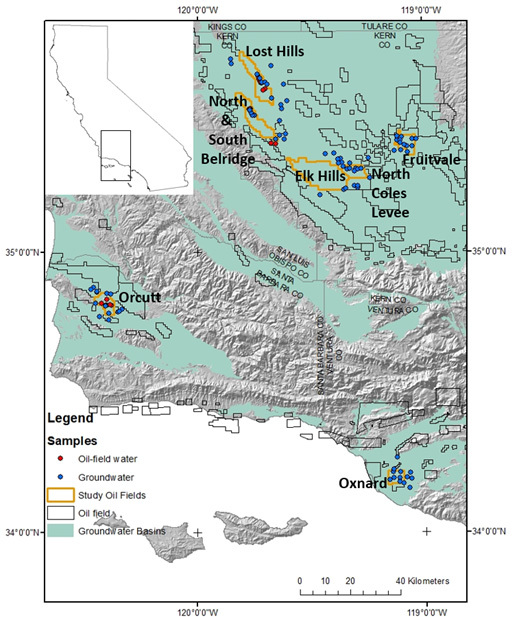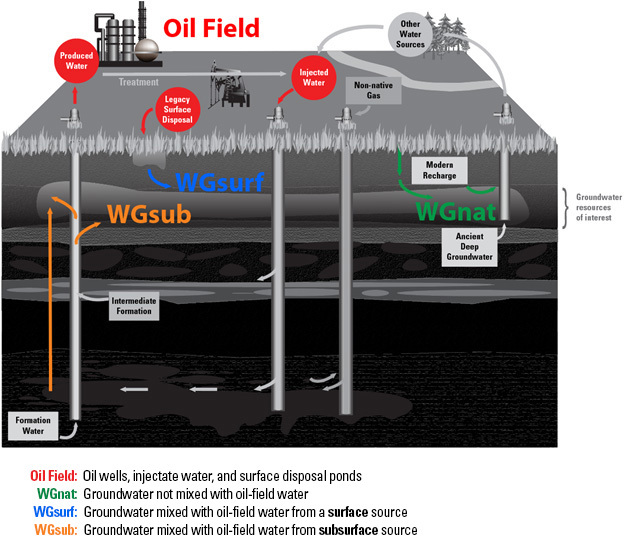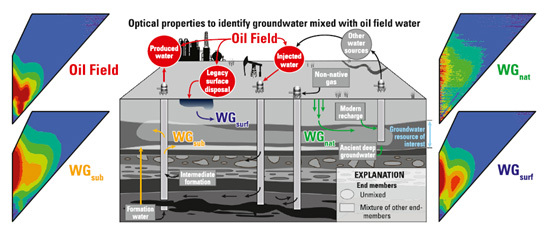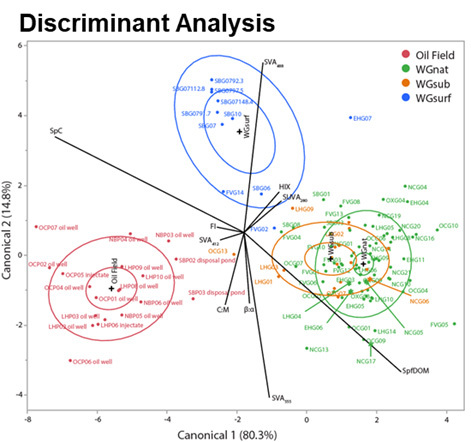California Oil, Gas, and Groundwater Program
Spectral characterization of dissolved organic matter in groundwater to assess mixing with oil-field water near selected oil fields, southern California
Summary of Hansen and others (2023)
Chemists have used the way light is absorbed and emitted in dissolved mixtures of organic chemicals to “fingerprint” the source of those compounds.
The goal of this study was to determine whether optical methods can be effectively used to quickly screen for oil-field fluids from a particular source, and can provide information about subsurface migration pathways.
The objectives were to determine if:
optical measurements can distinguish among native groundwater, oil-field water, and mixtures of native groundwater and oil-field water.
optical measurements can be used to determine if oil-field fluids migrated from surface or subsurface sources.
Groundwater (n = 103) and oil-field (n = 20) water samples from multiple locations across southern California were analyzed with optical methods.


Results
Yes, optical measurements can detect groundwater mixed with oil-field water.
This graphic shows the different optical "fingerprints" obtained from different sample classes.

This graphic shows the quantitative analysis of differences between then optical fingerprints. This method successfully distinguished between sample types 96% of the time.

Discriminant analysis of optical measurements can distinguish between surface and subsurface migration pathways in many cases and is most helpful when oil field water is greater than a few percent of the groundwater mixture. Dilute fractions yield trace signals that are not as reliably distinguishable.
